The Science of Bringing Lost Species Back to Life: A Journey Through De-Extinction

The world has witnessed countless species disappear throughout history, from the iconic woolly mammoth to the enigmatic saber-toothed tiger. But what if we could reverse the clock and bring these captivating creatures back to life? The Science of Bringing Lost Species Back to Life explores the cutting-edge field of de-extinction, where scientists are embarking on a remarkable mission to resurrect extinct species.
A Glimpse into De-Extinction
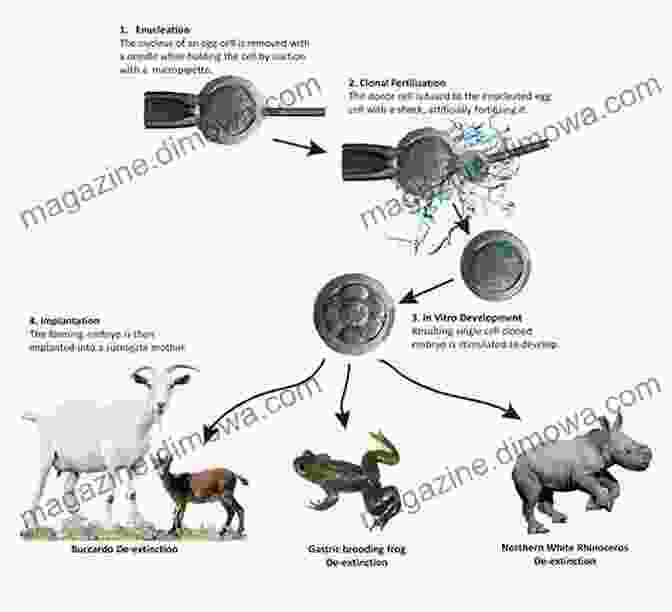
4.7 out of 5
| Language | : | English |
| File size | : | 4307 KB |
| Text-to-Speech | : | Enabled |
| Screen Reader | : | Supported |
| Enhanced typesetting | : | Enabled |
| Word Wise | : | Enabled |
| Print length | : | 124 pages |
De-extinction encompasses a range of scientific techniques aimed at resurrecting species that have vanished from Earth. By utilizing advanced genetic engineering and cloning technologies, scientists are attempting to bring back long-lost creatures, offering hope for ecological restoration and the conservation of biodiversity.
The Case of the Wooly Mammoth
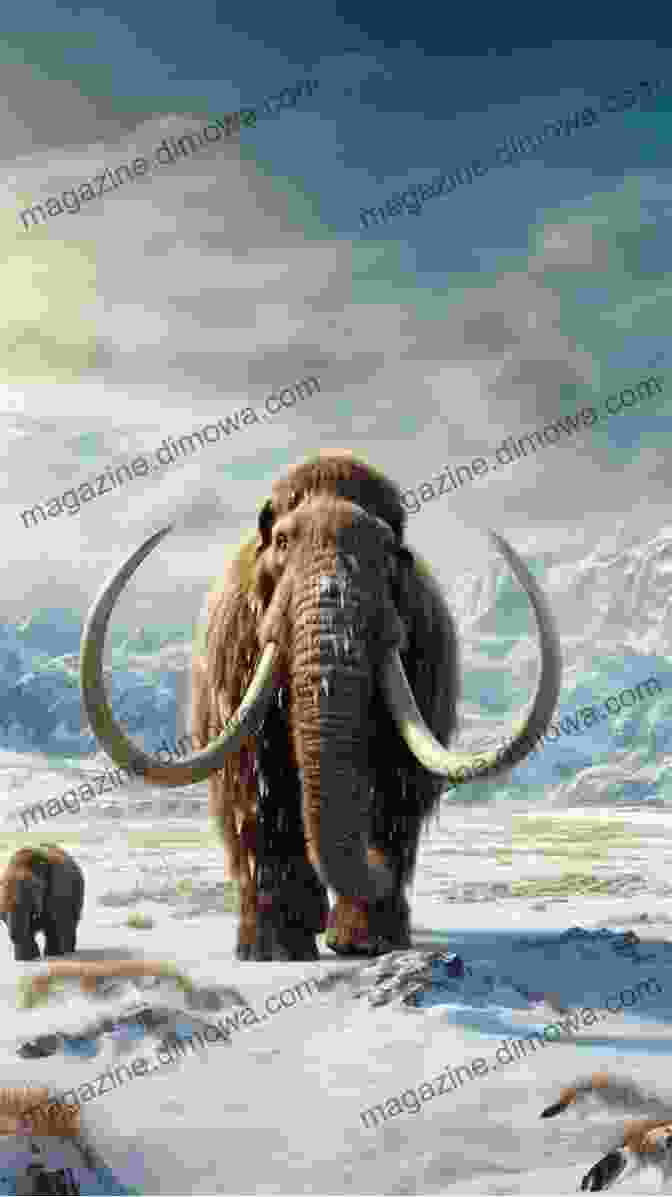
One of the most ambitious de-extinction projects is the revival of the woolly mammoth, a majestic creature that roamed the Earth during the Ice Age. Researchers have managed to extract DNA from frozen mammoth specimens, providing a blueprint for creating a genetically similar hybrid with modern-day elephants as surrogate mothers. The potential re of woolly mammoths to their former habitats could have significant ecological benefits, such as restoring Arctic ecosystems and facilitating carbon capture.
The Challenges of De-Extinction
While the concept of bringing extinct species back to life holds immense allure, it also poses numerous scientific and ethical challenges. The successful de-extinction of a species requires a deep understanding of its genetics, as well as the ability to create a viable and healthy population in modern-day environments. Ethical concerns arise regarding the welfare of cloned individuals, the potential ecological consequences of introducing extinct species into present ecosystems, and the allocation of limited resources.
The Power of Genetics

The advent of powerful genetic engineering tools, such as CRISPR-Cas9, has revolutionized the field of de-extinction. This technology allows scientists to make precise edits to an organism's DNA, facilitating the creation of genetic hybrids that carry the desired traits of extinct species. By studying the genomes of extinct animals, scientists can identify key adaptations and traits that contributed to their survival in different environments.
Ecological Consequences
The re of extinct species into modern ecosystems raises intriguing ecological questions. Scientists must carefully consider the potential consequences for existing species, as well as the ability of extinct species to adapt to present-day environmental conditions. Habitat restoration, species coexistence, and the preservation of genetic diversity become crucial factors in ensuring the successful integration of de-extinct creatures into their former ranges.
Ethical Considerations
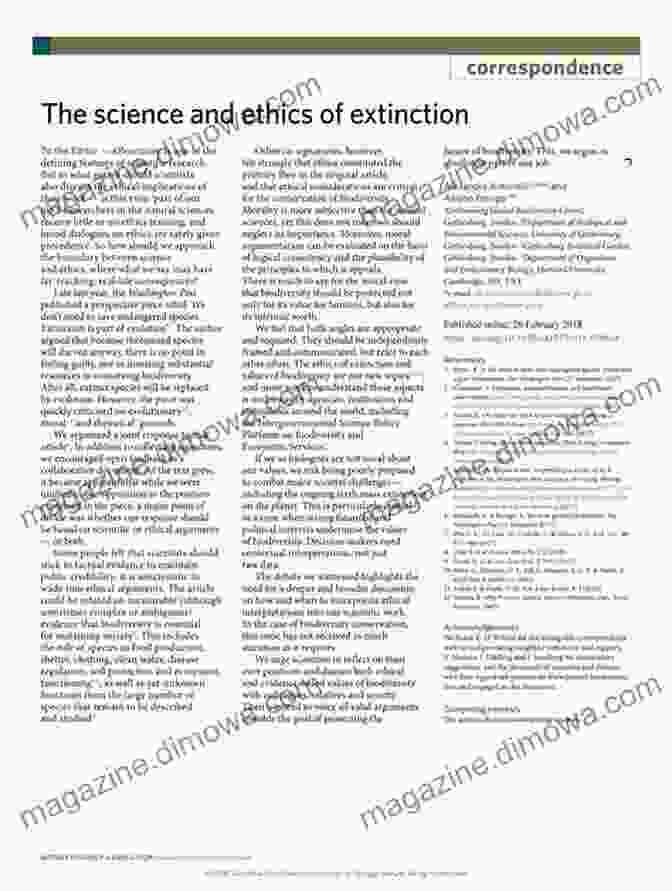
The pursuit of de-extinction raises profound ethical dilemmas. Researchers must grapple with questions such as the intrinsic value of extinct species, the responsibility to prevent harm to existing ecosystems, and the criteria used to determine which species deserve to be brought back. Public engagement and ethical guidelines are essential to guide the responsible development and implementation of de-extinction technologies.
The Way Forward
As the field of de-extinction continues to advance, international collaboration and interdisciplinary approaches are vital. Scientists, conservationists, ethicists, and policymakers must work together to address the complex challenges and opportunities posed by this emerging technology. Public education and outreach are crucial to inform decision-making and foster informed discussions about the ethical and ecological implications of de-extinction.
The Science of Bringing Lost Species Back to Life offers a comprehensive overview of the cutting-edge efforts to resurrect extinct species. While the challenges are significant, the potential benefits for ecological restoration, scientific knowledge, and our understanding of the natural world are undeniable. As we navigate the uncharted territory of de-extinction, it is essential to proceed with both scientific rigor and ethical responsibility, ensuring that the pursuit of bringing lost species back to life aligns with our broader goals of conservation and environmental stewardship.
4.7 out of 5
| Language | : | English |
| File size | : | 4307 KB |
| Text-to-Speech | : | Enabled |
| Screen Reader | : | Supported |
| Enhanced typesetting | : | Enabled |
| Word Wise | : | Enabled |
| Print length | : | 124 pages |
Do you want to contribute by writing guest posts on this blog?
Please contact us and send us a resume of previous articles that you have written.
 Book
Book Novel
Novel Page
Page Chapter
Chapter Text
Text Story
Story Genre
Genre Reader
Reader Library
Library Paperback
Paperback E-book
E-book Magazine
Magazine Newspaper
Newspaper Paragraph
Paragraph Sentence
Sentence Bookmark
Bookmark Shelf
Shelf Glossary
Glossary Bibliography
Bibliography Foreword
Foreword Preface
Preface Synopsis
Synopsis Annotation
Annotation Footnote
Footnote Manuscript
Manuscript Scroll
Scroll Codex
Codex Tome
Tome Bestseller
Bestseller Classics
Classics Library card
Library card Narrative
Narrative Biography
Biography Autobiography
Autobiography Memoir
Memoir Reference
Reference Encyclopedia
Encyclopedia John Lamberton Harper
John Lamberton Harper Jim Keoghan
Jim Keoghan John Huang
John Huang Jim Freedman
Jim Freedman Lindsay Fullarton
Lindsay Fullarton Sarah Elisabeth Sawyer
Sarah Elisabeth Sawyer John Agard
John Agard Joanne Owen
Joanne Owen Susan Sessions Rugh
Susan Sessions Rugh L D Hedman
L D Hedman Kerstin Gier
Kerstin Gier John Melady
John Melady Peter Bramley
Peter Bramley John E Phillips
John E Phillips Jim Loomis
Jim Loomis Richard W Fisher
Richard W Fisher John Deering
John Deering Johanne Lavoie
Johanne Lavoie Ariel Landy
Ariel Landy John Mbaria
John Mbaria
Light bulbAdvertise smarter! Our strategic ad space ensures maximum exposure. Reserve your spot today!

 David PetersonHow to Structure a Phone Call: The Ultimate Guide to Effective Communication
David PetersonHow to Structure a Phone Call: The Ultimate Guide to Effective Communication
 Dwayne MitchellUnveiling the Architectural Masterpieces: A Journey Through The 50 Greatest...
Dwayne MitchellUnveiling the Architectural Masterpieces: A Journey Through The 50 Greatest... Billy PetersonFollow ·3.3k
Billy PetersonFollow ·3.3k John ParkerFollow ·3.1k
John ParkerFollow ·3.1k Phil FosterFollow ·19.9k
Phil FosterFollow ·19.9k Francis TurnerFollow ·16.8k
Francis TurnerFollow ·16.8k Lee SimmonsFollow ·6k
Lee SimmonsFollow ·6k Edgar CoxFollow ·7.4k
Edgar CoxFollow ·7.4k Diego BlairFollow ·18.8k
Diego BlairFollow ·18.8k Jackson BlairFollow ·3k
Jackson BlairFollow ·3k

 Joshua Reed
Joshua ReedTake Your Marketing Business Into The Next Level
Are you ready to...
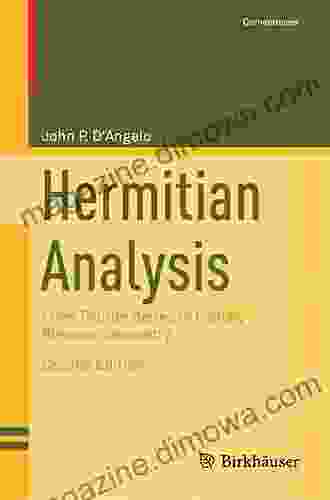
 Aaron Brooks
Aaron BrooksFrom Fourier to Cauchy-Riemann: Geometry Cornerstones
From Fourier to Cauchy-Riemann: Geometry...
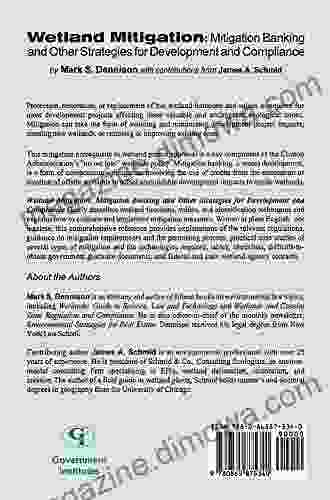
 Orson Scott Card
Orson Scott CardUnveiling the Art of Mitigation Banking: A Comprehensive...
In the intricate dance between...

 Victor Hugo
Victor HugoUnleash Your Creativity: A Journey Through the Enchanting...
Prepare to be captivated as we...

 Duncan Cox
Duncan CoxLoad of Bull: An Englishman's Adventures in Madrid
By Simon Bunce ...
4.7 out of 5
| Language | : | English |
| File size | : | 4307 KB |
| Text-to-Speech | : | Enabled |
| Screen Reader | : | Supported |
| Enhanced typesetting | : | Enabled |
| Word Wise | : | Enabled |
| Print length | : | 124 pages |










